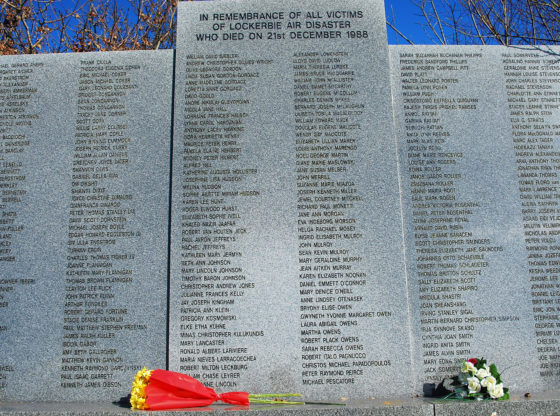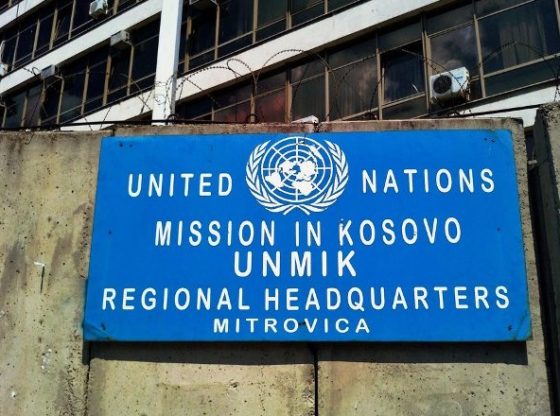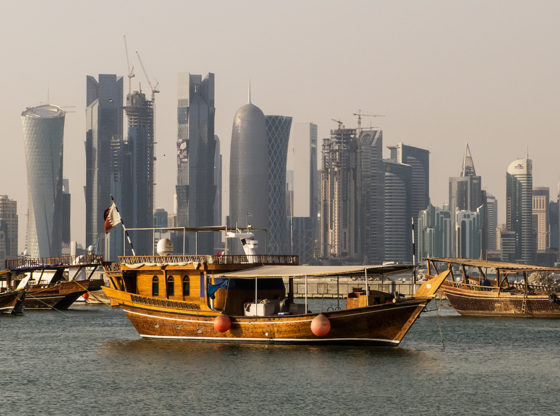In November 2017, the Scottish government hosted an Arctic Circle event in Edinburgh, at which it announced its intention to develop an Arctic Strategy. What are the options for Scotland as it looks northwards? In this essay, Morten Stemre considers the various opportunities, on both a practical and an organisational level. There are bright prospects, he argues, and Scotland - including the Highlands and Islands region - could have a significant role to play.
When Scotland hosted an Arctic Circle Forum event in Edinburgh in November 2017, the Scottish government announced its intention to develop an Arctic Strategy for Scotland. This was a prospect that John MacDonald had discussed, in-depth, in the November issue of CABLE. Both the hosting of the Arctic Forum, and the strategy announcement, signal that Scotland is turning its attention northwards. Earlier in 2017, the Scottish government updated its Nordic-Baltic policy statement, first launched in 2014, and First Minister Sturgeon has spoken at the last two Arctic Circle Assemblies in Reykjavik.
In Edinburgh, Ólafur Ragnar Grímsson, the former President of Iceland and Chair of Arctic Circle, argued forcefully about the mutual benefits for both Scotland and its northern neighbours from Scotland’s strengthened Arctic engagement. At the core of his argument, President Grímsson frames the Arctic as a new and developing laboratory of international cooperation, a cooperation that moves beyond the scope of traditional relations between nation states. As we look north, it is clear that there are opportunities for Scotland, regardless its constitutional status within the UK, and its relationship with the European Union.
As MacDonald pointed out in his November article, a Scottish Arctic strategy would express Scotland’s interest in, and intentions towards, the Arctic region. It would bring a new level of awareness of Arctic affairs in Scotland, it would signal clearly Scotland’s interest to regional partners, and it could act as a platform for the Scottish government to keep up-to-date with developments in Arctic affairs.
Scotland will be just one of many non-Arctic governments with Arctic strategies and policies. So clear, concrete signs of intention must supplement the development of any Scottish strategy.
However as MacDonald also notes, given the level of international interest in the Arctic today, Scotland will be just one of many non-Arctic governments with Arctic strategies and policies. So clear, concrete signs of intention must supplement the development of any Scottish strategy.
There are numerous Arctic-focused organisational setups which can facilitate more or less formalised engagements between Scotland and its northern neighbours, dependent on where mutual interests lie. Importantly, some of the opportunities for collaboration exist not just for the central government in Edinburgh, but also for the Highlands and Islands.
ARCTIC CONFERENCES
The most accessible, informal, but nonetheless very useful, platforms for Arctic engagement are the numerous Arctic conferences. These events gather a wide range of Arctic stakeholders and provide easy access to, and up-to-date information on, Arctic affairs. The two dominant ones are Arctic Circle Assembly in Reykjavik and Arctic Frontiers in Tromsø.
Beate Steinveg from the University of Tromsø has studied whether these Arctic conferences really matter. Her preliminary findings underline the importance of informal meetings and political discussions behind the scenes. However, it is important to note that no-one is in charge of following up initiatives that come up during many of the conferences. For example, the Arctic Circle conference, where Scotland has played an active role in the last couple of years, explicitly leaves the responsibility for continuity and concrete action to the stakeholders themselves.
Scotland could (and should) continue its involvement in conferences such as Arctic Circle. Such events provide access to stakeholders, and an arena for sharing Scotland’s interests and visions. But this involvement needs tangible follow-ups, based upon what has been discussed and agreed. The development of a Scottish Arctic strategy would represent such a step, but that strategy would need to translate into more concrete initiatives than the dissemination of policy documents, and conference speeches and presentations.
THE COUNCILS
Looking at current cooperation arrangements in Scotland’s northern neighbourhood, a group of councils appear as the main fora. They are the Arctic Council, the Nordic Council, the Nordic Council of Ministers, and the West Nordic Council.
The Arctic Council is the pre-eminent organisation for Arctic cooperation, set up in 1996. In contrast to the more open playing field of conferences such as Arctic Circle, the Arctic Council is an inter-governmental organisation and remains largely the realm of nation states. The Arctic Council is thus a forum for foreign ministries in the capitals (most of which are located outside the Arctic region, as locally-based Arctic stakeholders never fail to note). As such, Scotland’s opportunities – as a non-sovereign nation – are probably limited to exploring a greater role in the United Kingdom’s observer function: this would clearly be a matter for discussion between Edinburgh and London.
Limitations on Scotland’s opportunities due to the nation state emphasis also apply, in part, to the Nordic Council of Ministers and the Nordic Council. The former is a governmental cooperation established in 1971, whereas the latter is the parliamentary cooperation established back in 1952. Both Councils have the five Nordic countries as full members, but offer extensive rights to the three self-governing entities of Greenland, the Faroe Islands, and the Åland Islands. However, the two Councils have rejected Faroese attempts for full membership.
An independent Scotland could probably pursue an observer status at the Nordic Council – indeed, some Council members actually discussed this possibility informally in the run-up to Scotland’s 2014 independence referendum. Full membership, a prospect that would undoubtedly spark heated discussions in the Nordic capitals, might also be a possibility. However, within a shorter time-frame of strengthened northern cooperation, the Nordic Council of Ministers offer other opportunities for Scotland.
An independent Scotland could probably pursue an observer status at the Nordic Council – indeed, some Council members actually discussed this possibility informally in the run-up to Scotland’s 2014 independence referendum.
Whilst it is not very extensive, the Council does have a programme for cooperation with the so-called ‘western neighbours’, which includes Scotland. There is already a Memorandum of Understanding between the Nordic Council of Ministers and the Canadian province of Québec. This relationship underscores the possibility for Scotland to develop international stronger ties, regardless its constitutional status within the UK.
The Nordic Council of Ministers’ western engagement originates partly from the desire of the three West Nordic countries (Greenland, Iceland and the Faroe Islands) to strengthen bonds with their own neighbours, but also to balance out the strong emphasis on the Baltic region that developed within Nordic cooperation with the breakup of the Soviet Union.
Today’s modest arrangements perhaps fall short of the expectations that drove its initial development. However, increased Scottish interest could certainly serve the interests of both Scotland and the West Nordic countries, in various ways.
There is also an Arctic cooperation programme within the Nordic Council of Ministers. However, the Council’s role as an Arctic stakeholder is ambiguous. It can be an important funder of projects under the Arctic Council, where it also has observer status, but it does not have its own Arctic strategy, or play a prominent role in Arctic cooperation at the political level. All five Nordic states are members of the Arctic Council and consider this platform a matter of important national interest, largely outside the scope of other formal Nordic cooperation. As an illustration, we might note that the foreign ministry divisions responsible for Arctic affairs are normally not the same as those responsible for Nordic cooperation.
Consequently, Nordic cooperation pathways are not necessarily the most promising routes for Scotland if its aim is a greater role in Arctic affairs. Nevertheless, if we look to the prospect of strengthening bonds with northern neighbours, there are numerous opportunities and avenues.
THE WEST NORDIC REGION
The three West Nordic countries - Iceland, the Faroe Islands, and Greenland - established the West Nordic Council in 1985. Its creation can perhaps be seen as consequence of the Nordic Council not providing sufficient opportunities for the three countries to cooperate on issues where they have greater common interests among themselves than with the broader Nordic region. As a platform which facilitates and encourages cooperation between one fully independent state (Iceland) and two self-governing entities (the Faroes and Greenland) on an equal footing, the West Nordic Council could more easily allow for parliamentary cooperation with Scotland. It is interesting to note that the Norwegian parliament is an observer in the West Nordic Council: this might be seen as a precedent for the Scottish parliament.
The West Nordic Council adopts recommendations sent to its three parliaments and three governments, but is not supplemented by its own Council of Ministers. This inevitably places some limits on its implementation capacity. In recent years, the West Nordic Council has strengthened its Arctic profile, and it became an Arctic Council observer at the last Arctic Council Ministerial Meeting. Furthermore, the three West Nordic countries have signed agreements on Ministerial cooperation in various areas, such as health, foreign affairs, and trade, in part as a follow-up to recommendations from the West Nordic Council.
The West Nordic agreement on foreign affairs has caused a diplomatic stir within the Kingdom of Denmark. The controversy revolves around the level of autonomy that Greenland and the Faroe Islands may see fit to exercise on the international stage as a consequence of this agreement. Greenland and the Faroe Islands both signed the agreement as themselves (rather than with reference to the Kingdom of Denmark) and did not offer sufficient consultation with the Danish government (according to the Danish government).
This is an interesting case for Scotland. It illustrates the challenges in developing international cooperation that exist for nations which lack sovereignty but which desire greater cooperation with other governments. This challenge is surely a common interest between Scotland, the Faroe Islands, and Greenland.
LANGUAGE BARRIERS?
West Nordic and Nordic cooperation purposefully emphasises and uses the Scandinavian languages (Danish, Norwegian, and Swedish). This is an acknowledgement that language plays a crucial role in shaping cultural bonds and reinforcing Nordic identity. The use of English is avoided where possible. As such, Scottish involvement in the formal governmental and parliamentary West Nordic and Nordic cooperation would undoubtedly face a language barrier.
However, it should be noted that the language dynamic across the region is developing continuously, and English is gaining ground. As things stand, Iceland and Finland are fighting for equal status for their languages in Nordic cooperation, where the use of English as the de-facto working language in many meetings is on the rise. Iceland, the Faroe Islands, and Greenland work to promote their own languages at home. Both the Faroes and Greenland are, to some extent, following Iceland’s example in promoting English at the expense of Danish.
Whilst the merits of cutting linguistic ties with Scandinavia are dubious at best, developments may be moving in that direction. From a Scottish perspective, this may lower language barriers in the future.
THE HIGHLANDS AND ISLANDS and the NORDIC NORTH ATLANTIC
The issues discussed above primarily look at opportunities of interest for the Scottish government and parliament in Edinburgh. However, there are also opportunities available for Scotland’s northern regions in the Highlands and Islands. In the ‘laboratory’ of international cooperation to the north, there are flexible cooperation opportunities among sometimes quite different non-state actors.
The Nordic Atlantic Cooperation (NORA) illustrates the potential for flexible organisational setups. NORA consists of Greenland, Iceland, the Faroe Islands, and Coastal Norway. It is thus made up of: nine coastal counties of Norway, and the Norwegian central government in Oslo; two self-governing countries in the Kingdom of Denmark without the involvement of the Danish government; and the fully sovereign state of Iceland. These four countries appoint delegations to the NORA committee where they meet as four equal partners and work, based on consensus. This is, by any measure, a highly interesting grouping.
The main activities of NORA are small-scale project grants, various strategic initiatives, and the implementation of projects for other entities such as the Nordic Council of Ministers. The organisation works on a wide range of topics such as marine resources and the bioeconomy, sustainable tourism, green energy solutions, creative industries, ICT, and welfare services. NORA is among the main actors in Nordic cooperation with the western neighbours, and has a long history of prioritising the involvement of Scottish partners in its activities, although it is currently unable to provide funding to Scottish partners.
Given the geographical scope of NORA and its thematic priorities, the interests for Scotland should be apparent. However, given NORA’s small budget and projects, forging connections may be more suitable for the Highlands and Islands than for Scotland as a whole. The question is thus whether it’s feasible to consider strengthening ties between the Highlands and Islands and NORA?
The question is thus whether it’s feasible to consider strengthening ties between the Highlands and Islands and NORA?
The answer to this question is undoubtedly ‘Yes’ – if there is interest from the Scottish side. From the Nordic side, the prospect of closer ties between NORA and western neighbours such as Scotland is, in fact, ‘old news’. In the early 2000s, when the West Nordic countries pushed for a greater focus on their neighbourhood within the context of Nordic cooperation, there were serious proposals about expanding NORA. A 2003 report on the West Nordic region in Nordic Cooperation, and a 2004 external evaluation of NORA, both recommend inviting neighbouring countries and regions to join the organisation as full members. Neither report was followed-up with concrete activities to address these recommendations, although NORA has conducted fact-finding missions to both Canada and Scotland.
If there was strong interest in developing deeper ties with the Highlands and Islands on the Nordic side, possibly even full membership as discussed above, this outcome would most likely be dependent on how authentic the expressions of interest appeared to be on the Scottish side. With Brexit looming, and its possible implications for both North Atlantic trade and fisheries relations, the Nordic countries are trying to position themselves appropriately but remain hesitant at this point.
Representatives of NORA and the Highlands and Islands Council share an interest in preserving the Northern Periphery and Arctic Programme as an important source of development financing, once the UK – and by extension Scotland – exits in European Union in 2019.
It is unlikely that the Nordic countries, or NORA, would take significant steps on their own initiative at such a time of uncertainty. However, given NORA’s pragmatic setup, the organisation undoubtedly offers opportunities for Scotland, independent of its relations with London and Brussels. Indeed, one post-Brexit possibility to consider is this: representatives of NORA and the Highlands and Islands Council share an interest in preserving the Northern Periphery and Arctic Programme as an important source of development financing, once the UK – and by extension Scotland – exits in European Union in 2019.
DEVELOPING THE NORTH ATLANTIC RIM
Within the developing narrative of the ‘Arctic agenda’, we would be wise to heed the phrase, ‘there’s more than one Arctic’. The frequency with which this phrase is repeated derives from the truthfulness of the statement. The North Atlantic area, still blessed with the warming powers of the Gulf Stream, is distinctly different from the Russian Arctic, and the North American Arctic, in many ways. As has been noted elsewhere, a North Atlantic perspective as a supplement to the broader Arctic viewpoint, particularly with its possibilities for pushing the boundaries and participation southwards, fits well with Scotland’s desire for deeper northern connections.
A North Atlantic perspective as a supplement to the broader Arctic viewpoint, particularly with its possibilities for pushing the boundaries and participation southwards, fits well with Scotland’s desire for deeper northern connections.
Scotland is not alone as an Atlantic sub-state entity increasing its attention towards the Arctic and North Atlantic in recent years. The US state of Maine has experienced a small revolution since Eimskip (the Icelandic shipping company) moved its North Atlantic headquarters to Portland, Maine.
Having hosted Arctic Council meetings, established a North Atlantic Office in its International Trade Centre, and attended the Arctic Circle Assembly in Reykjavik with large delegations led by the state Governor, Maine has become what President Grímsson described as the second pillar of US engagement in the Arctic region.
Another great example is Quebec, which was also represented at the Arctic Circle Forum in Edinburgh in November. As mentioned previously, it has signed a Memorandum of Understanding with the Nordic Council of Ministers. Other Canadian Atlantic and Arctic provinces have an active engagement in the region as well. These instances provide clear examples of what might be possible for Scotland.
Looking at the members of NORA, the Highlands and Islands of Scotland, and their neighbours across the Atlantic in Canada and the US, the prospect of a new ‘North Atlantic Rim’ grouping appears ever more credible and attractive. Its members would be, apart from Iceland, non-state entities with different political status, allowing for less formal and more pragmatic cooperation. Iceland, as its only state entity, would be strategically located in the middle, and could serve as the hub of aviation and shipping connections that make regional cooperation in the North Atlantic feasible.
This grouping could have a clear North Atlantic identity, both Arctic and non-Arctic, and serve as a useful supplement to the broader, capital-city-based Arctic cooperation. Moreover, it would consist of entities that are ‘closer’ to the people actually living in the region than, for instance, can be said of the Arctic Council.
Looking at the members of NORA, the Highlands and Islands of Scotland, and their neighbours across the Atlantic in Canada and the US, the prospect of a new ‘North Atlantic Rim’ grouping appears ever more credible and attractive.
All the entities in the North Atlantic Rim would often be seen, and see themselves, as remote and peripheral. However, as the people in Maine have experienced in the last couple of years, when you apply a North Atlantic perspective, you become a node in a larger international network. While the ideas about closer cooperation among these countries and entities are not new, there now seems to be a greater confluence of increased interest than ever before.
As it pursues its opportunities in the ‘New North’, Scotland - and indeed the Highlands and Islands as a distinct entity - can possibly lead the way towards new regional cooperation and organisational setups across the North Atlantic Rim.
Morten Stemre is a Norwegian living in the Faroe Islands. He works for the Nordic Atlantic Cooperation (NORA) as an Advisor and serves on the Advisory Board of the Nordic House in the Faroe Islands. The views and opinions expressed in this article are those of the author and do not necessarily reflect the views and opinions of his employer or organisational affiliations.
Feature image: The Arctic Circle Forum, Edinburgh, November 2017. Image: John MacDonald











